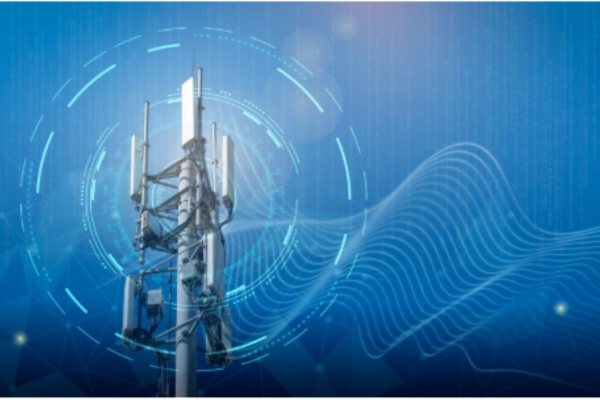Boosting Workforce Productivity With Better Mobile Infrastructure
04 October 2025
5 Mins Read

- Reducing Latency and Micro-Inefficiencies in Daily Work
- Beyond Coverage: Intelligent Network Design
- Security as a Productivity Enabler, Not a Barrier
- Device Lifecycle and Invisible Downtime
- Edge Computing for the Everyday Worker
- Mobile Infrastructure as a Cultural Equalizer
- Collaboration Without Friction
- Sustainability and Productivity Interlinked
- Preparing for the Next Five Years of Mobile Work
- Conclusion
Work no longer happens only at desks. It follows people through airports, factory floors, warehouses, homes, and client sites. When mobile infrastructure works well, employees barely notice it.
If it falters, small interruptions can snowball into missed deadlines and frustrated teams. Stronger infrastructure and well-designed mobile solutions can shift daily performance in measurable ways.
Reducing Latency and Micro-Inefficiencies in Daily Work
Every second an employee waits for a file to open, a call to stabilize, or a system to sync drains attention. These minor delays may seem trivial, but multiplied across a workday, they consume hours. Companies often overlook the hidden drag caused by these micro-inefficiencies.
Low-latency mobile networks directly support higher output. In logistics, delayed tracking updates can disrupt delivery schedules. In healthcare, lagging access to patient records can reduce the quality of care. Reducing seconds of wait time lets workers stay focused on the task at hand rather than troubleshooting lag.
Mobile solutions empower businesses to stay connected and productive by adapting quickly to fast-changing mobile technology. With scalable mobile infrastructure support and mobility managed services for device management and monitoring, organizations cut inefficiencies and keep employees focused. Adopting better mobile infrastructure delivers fewer delays and smoother operations at every level.
Beyond Coverage: Intelligent Network Design
A wide blanket of mobile coverage looks good on paper, but weak signals in key areas still disrupt work. Intelligent design of mobile network infrastructure prioritizes where and how employees actually work.
Private 5G networks, Wi-Fi 6e, and micro-cell systems in offices or warehouses ensure steady coverage where usage is high. Load balancing tools shift network bandwidth during peak hours so collaboration never stalls.
Predictive modeling adds another layer. By studying workforce activity, companies can anticipate where demand will spike. Strategic infrastructure deployment prepares operator networks for surges, keeping productivity steady during rushes or onboarding. Better mobile infrastructure supports this flexibility and gives teams confidence that connections will hold up under pressure.
Security as a Productivity Enabler, Not a Barrier

Security often feels like an obstacle. Workers juggle multiple logins, password resets, and VPN errors. These hurdles slow down workflows while creating frustration. A better IT infrastructure can integrate mobile device safety solutions that protect without slowing workflows.
Zero-trust, biometric logins, and device encryption secure information while cutting manual steps. Continuous authentication quietly confirms user identity in the background, limiting interruptions. Employees complete tasks faster when systems safeguard data without forcing constant checks.
A culture of security also builds confidence. Workers who trust their tools spend less mental energy worrying about breaches and more on producing results. Strong, seamless security becomes a hidden productivity driver.
Device Lifecycle and Invisible Downtime
A weak link in mobile telecommunication technologies often comes from the devices themselves. Phones or tablets with outdated chips, short battery lives, or compatibility issues chip away at efficiency. Lagging response times create frustration, while frequent replacements disrupt workflows.
Lifecycle management addresses these risks. Regular refresh cycles, predictive diagnostics, and modular repairs help extend device reliability. Remote monitoring tools can detect early signs of failure and fix problems before downtime affects the worker.
Predictive replacement strategies go a step further. Forecasting degradation allows companies to replace or upgrade devices before glitches waste time.
Edge Computing for the Everyday Worker
Edge computing is often discussed in industrial IoT, but it also clearly has value for daily productivity. It processes data closer to the user, minimizing delays from cloud round-trip times.
Consider a field technician needing schematics or updates on equipment. If data loads instantly from a local edge server rather than waiting on cloud infrastructure, tasks move faster and more smoothly. This speed could make a critical difference in sectors like supply chain and emergency response.
Branch offices or remote sites can also host local edge nodes. These nodes run analytics locally, reducing reliance on central servers and speeding decisions.
Mobile Infrastructure as a Cultural Equalizer
Not every employee works in a city with robust coverage. Workers in rural or underserved areas often experience weaker connectivity, which limits participation and slows collaboration. These gaps quietly divide teams and hinder overall performance.
Better infrastructure levels the playing field. Companies can partner with providers to create tailored workforce packages or subsidize enhanced mobile broadband for remote employees. Such investment guarantees that location does not determine opportunity.
Equal access fosters stronger morale. Workers who feel fully connected contribute more freely to collaboration, which in turn raises the organization’s collective productivity.
Collaboration Without Friction
Cloud-based work relies heavily on stable video calls, file-sharing systems, and real-time edits. When mobile solutions fall short, meetings drop, audio stutters, and documents fail to sync. These issues waste time and weaken teamwork.
Optimizing IT infrastructure for collaboration means prioritizing stability for communication tools. Bandwidth allocation can adjust dynamically during calls or shared editing sessions. Network sharing agreements between providers can also improve resilience, ensuring employees enjoy reliable 5G connectivity across regions.
The best infrastructure feels invisible. Employees focus on content and decisions, not on fixing broken connections. Teams thrive when technology fades into the background.
Sustainability and Productivity Interlinked
Sustainability and productivity often seem like separate conversations. In reality, energy efficiency in infrastructure and devices reduces waste while also limiting downtime. Greener systems tend to run cooler, last longer, and fail less often, which improves reliability.
Optimized data transfer lowers strain on telecommunications infrastructure and reduces interruptions. Energy-conscious design extends device lifespan, which means fewer replacements and less disruption to workflow.
Efficient cooling in data centers also minimizes outages caused by overheating. Better mobile infrastructure, combined with sustainable design, helps organizations achieve performance and environmental goals.
Preparing for the Next Five Years of Mobile Work
Large enterprises need to prepare their IT infrastructure for the tools employees are starting to use. Augmented reality, real-time translation, and digital twins require more bandwidth and stronger connections. Without preparation, these new tools risk creating bottlenecks instead of benefits.
Companies can design mobility roadmaps tied directly to workforce needs. Mobility roadmaps align fixed wireless access, mobile broadband, and upgrades with future applications, preventing gaps. This proactive stance gives employees the support they need when innovations reach the field.
Mobile solutions that anticipate future demands protect organizations from costly catch-up investments. They also allow the workforce to explore new mobile technology with confidence. Strategic use of network sharing and operator networks helps smaller firms and large enterprises maintain the agility to compete.
Conclusion
Better mobile infrastructure underpins productivity. It reduces latency, strengthens collaboration, secures workflows, and closes gaps between employees in different regions. When organizations view infrastructure as a strategy rather than a utility, performance improves at every level.
Mobile solutions provide the flexibility and reliability that modern work demands. They keep workers engaged, reduce downtime, and prepare businesses for the tools of tomorrow. Treating infrastructure as an active driver of productivity makes it possible for employees to deliver their best without disruption.



















Comments Are Closed For This Article